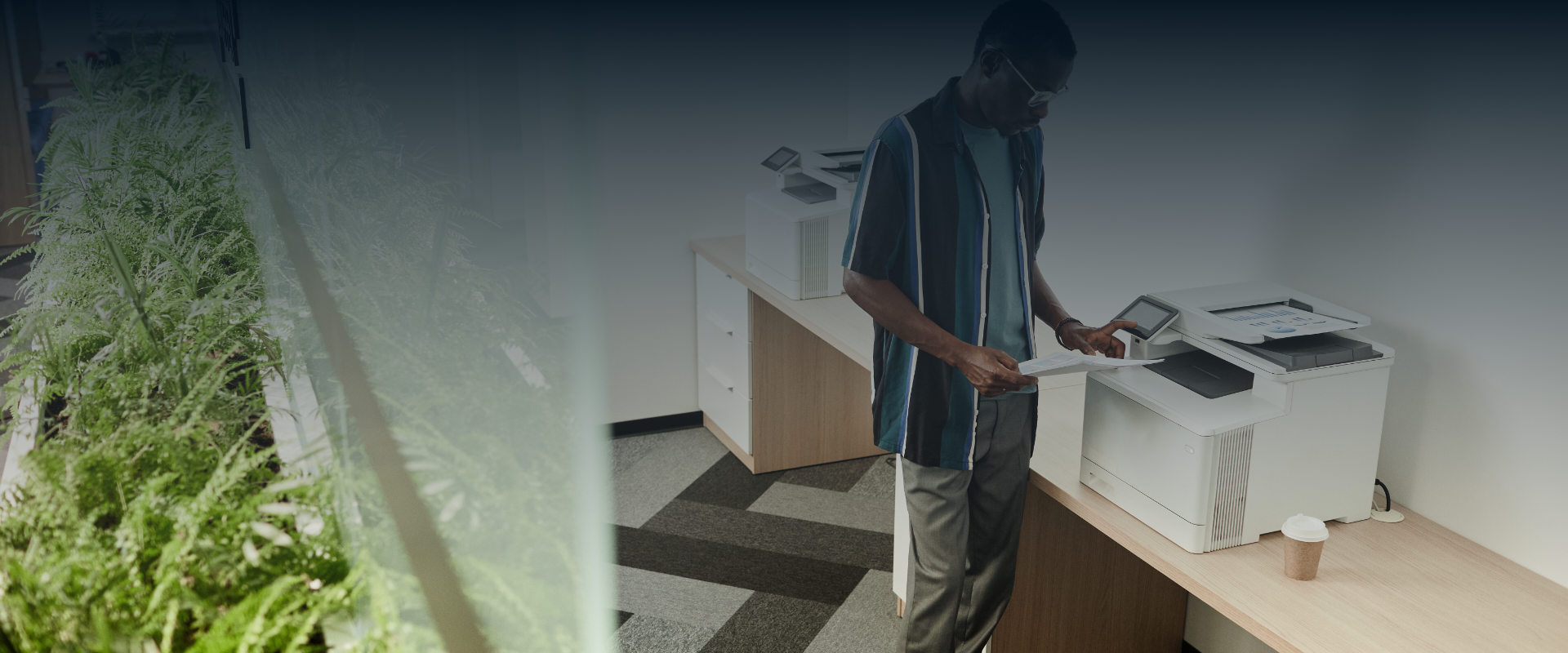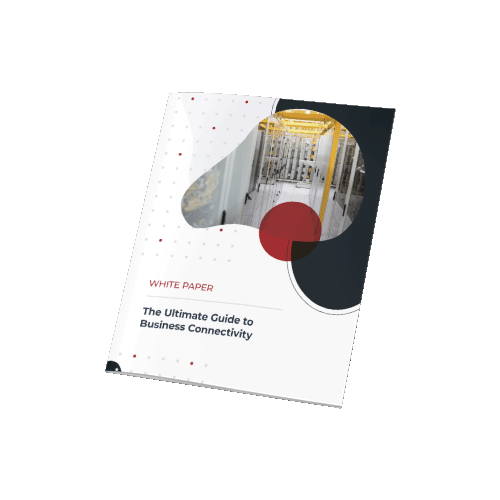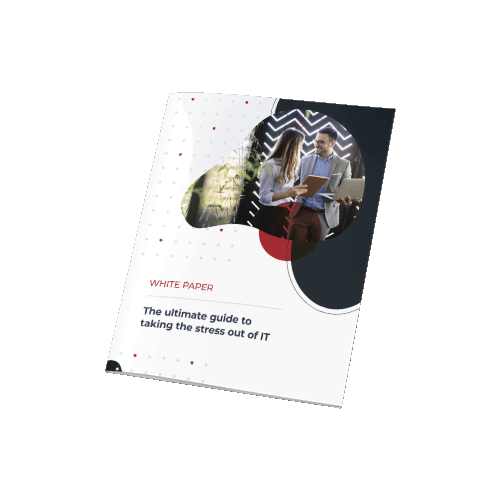Publish on: 21 March 2023 at 17:34
Table of contents
The Impact of Printing on Climate Change and How to Reduce It
Printing has been an essential tool for communication and information dissemination for centuries. From books and newspapers to business documents and advertising materials, printing has played a crucial role in our society. However, as we become more aware of the impact of human activities on the environment, it is important to consider the environmental impact of printing, including its contribution to climate change. For most businesses, printing is still critical and is not something they can easily reduce or eliminate. So, for man, an alternative will be to recycle or offset the environmental impact printing is having on our climate.
The impact of printing on climate change is multifaceted. Here are some of the ways in which printing can contribute to climate change:
Deforestation
Paper, the primary material used in printing, is made from trees. The production of paper requires large amounts of wood, and this often results in deforestation. Deforestation reduces the ability of forests to absorb carbon dioxide, a major greenhouse gas, contributing to climate change.
The production of paper involves cutting down trees, which releases the carbon stored in them into the atmosphere. Trees absorb carbon dioxide from the atmosphere and store it in their wood, leaves, and roots. When trees are cut down, the stored carbon is released back into the atmosphere. Deforestation also reduces the number of trees available to absorb carbon dioxide from the atmosphere, which contributes to climate change.
Energy consumption
The production of paper, ink, and other printing materials, as well as the operation of printers and other printing equipment, requires energy. This energy can come from fossil fuels, which are a significant source of greenhouse gas emissions. The production of electricity generates emissions that contribute to climate change.
The production of paper and ink involves energy-intensive processes, such as pulping, drying, and refining. The operation of printers and other printing equipment also requires energy. The energy used in the production of printing materials and the operation of printers can come from fossil fuels, which are a significant source of greenhouse gas emissions.
Emissions from production processes
The production of paper, ink, and other printing materials can generate greenhouse gas emissions. The extraction, processing, and transportation of raw materials used in printing, as well as the manufacturing of printers and other printing equipment, can result in carbon emissions and other pollutants that contribute to climate change.
The production of printing materials and equipment involves various stages, including the extraction of raw materials, processing, transportation, and manufacturing. These stages involve energy-intensive processes that generate greenhouse gas emissions. The extraction and transportation of raw materials, such as wood and minerals, can also result in habitat destruction and biodiversity loss, which contribute to climate change.
Waste generation
Printing can generate a significant amount of waste, including paper waste, ink cartridges, and other consumables. When this waste is not properly managed, it can end up in landfills, where it decomposes and produces methane, a potent greenhouse gas that contributes to climate change.
Printing generates waste in various forms, including paper waste, ink cartridges, and other consumables. The disposal of this waste can contribute to climate change if it is not properly managed. When paper waste and other biodegradable waste decompose in landfills, they release methane, a potent greenhouse gas that contributes to climate change.
Transportation
The transportation of printed materials, such as books, magazines, and newspapers, requires energy and can contribute to greenhouse gas emissions, particularly if long distances are involved.
The transportation of printed materials involves energy use and can generate greenhouse gas emissions. Printed materials often need to be transported from the point of production to the point of consumption, which can involve long distances and multiple modes of transportation, such as trucks, ships, and airplanes.
To mitigate the impact of printing on climate change, it is important to consider sustainable printing practices. Here are some solutions that can help:
- Reduce paper consumption: One of the most effective ways to reduce the environmental impact of printing is to reduce paper consumption. This can be achieved through practices such as double-sided printing, using electronic documents instead of paper whenever possible, and printing only what is necessary.
- Choose sustainable printing materials: Opt for printing materials that are certified as sustainable, such as paper that is certified by organisations like the Forest Stewardship Council (FSC). These certifications ensure that the paper is sourced from responsibly managed forests, which helps reduce deforestation and promotes biodiversity conservation.
- Use eco-friendly inks: Choose printing inks that are eco-friendly, such as vegetable-based inks or low-VOC (volatile organic compound) inks. These inks are made from renewable resources and have lower emissions compared to traditional petroleum-based inks.
- Practice proper waste management: Implement proper waste management practices for paper waste, ink cartridges, and other consumables. Recycle paper waste and ink cartridges whenever possible and dispose of them in an environmentally responsible manner. Consider using ink cartridges that are refillable or made from recycled materials.
- Optimise printing processes: Optimise printing processes to reduce energy consumption. This can include using energy-efficient printers, setting printers to sleep mode when not in use, and using print settings that minimise ink usage.
- Promote digital alternatives: Embrace digital alternatives to printing whenever possible. Use electronic documents, online platforms, and digital communication methods to reduce the need for printing. Encourage digital reading and online sharing of information to reduce the demand for printed materials.
- Choose local printing services: Choose local printing services to reduce transportation emissions associated with the delivery of printed materials. Printing locally can also support the local economy and promote sustainable practices.
- Educate and engage stakeholders: Educate employees, clients, and other stakeholders about the environmental impact of printing and the importance of sustainable printing practices. Encourage them to adopt eco-friendly printing practices and provide resources and support to help them implement these practices.
Conclusion
In conclusion, printing has a significant impact on climate change through deforestation, energy consumption, emissions from production processes, waste generation, and transportation. However, by adopting sustainable printing practices such as reducing paper consumption, choosing sustainable printing materials and inks, practicing proper waste management, optimising printing processes, promoting digital alternatives, choosing local printing services, and educating stakeholders, we can mitigate the environmental impact of printing and contribute to a more sustainable future. It is crucial for individuals, businesses, and organisations to be aware of the environmental impact of printing and take proactive steps to minimise their carbon footprint in the printing process. By collectively adopting sustainable printing practices, we can contribute to mitigating climate change and protecting our planet for future generations.
Looking to reduce your costs and
improve your efficiency?
Speak with the experts at identifying underutilised technology, environmental impact, security
vulnrabilities and contracts with hidden terms.






















